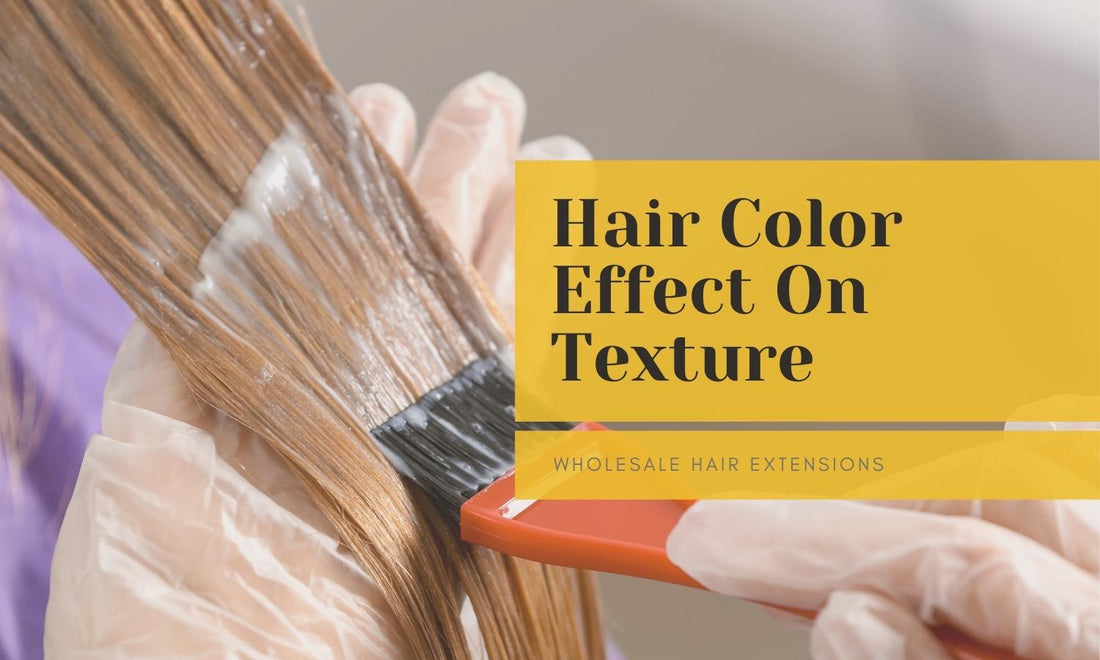
Does Hair Color Change Your Hair Texture?
Share
When considering a new hair color, many wonder if dyeing their hair will alter its texture.
This question often arises from the confusion between the visual changes that occur with hair coloring and the actual structural impact it might have.
Let’s dive into the science and separate myth from reality so you won't mess up the texture of your new deep wave hair.

Understanding Hair Structure
Hair is made of keratin, a protein that forms the foundation of its strength and texture.
Natural wave hair texture — whether straight, wavy, curly, or coily — is determined by genetics and the shape of the hair follicle.
While external factors like humidity and styling products can influence how hair feels or behaves, the core texture remains largely unchanged.
 What Happens During Hair Coloring?
What Happens During Hair Coloring?
Hair coloring typically involves the use of chemical treatments, whether to lighten, darken, or change the shade of your straight hair.
These chemicals interact with the hair cuticle (the outer protective layer) and cortex (the inner layer where pigment resides).
Here’s how:
-
Opening the Cuticle: Hair dye lifts the cuticle to deposit or remove color.
-
Altering Pigment: For permanent dyes, the natural pigment in the cortex is either lightened or replaced with synthetic pigment.
-
Chemical Effects: Ammonia, peroxide, and other chemicals used in hair dyeing processes can sometimes weaken the cuticle.
 Does Hair Texture Change?
Does Hair Texture Change?
While hair coloring itself doesn’t alter your genetic hair texture, it can impact how your hair feels or behaves.
Here’s why:
-
Porosity: Colored hair often becomes more porous, meaning it absorbs and loses moisture more easily. This can make hair feel drier or rougher.
-
Elasticity: Hair might lose some elasticity after chemical treatments, leading to increased brittleness.
-
Smoothness: Damaged cuticles can create a less smooth surface, making hair feel different to the touch.
These changes are not the same as a fundamental change in texture. For example, curly hair won’t turn straight, nor will straight hair become curly simply because of hair dye.
However, improper coloring techniques or over-processing can cause damage, which may make hair appear limp or frizzy.
 Tips to Protect Colored Hair
Tips to Protect Colored Hair
If you choose to color your hair, maintaining its health is crucial:
-
Moisturize Regularly: Use hydrating shampoos, conditioners, and hair masks to combat dryness.
-
Limit Heat Styling: Reduce the use of blow dryers, straighteners, and curling irons to prevent additional stress on the hair.
-
Opt for Professional Services: A trained professional can minimize damage by using high-quality products and proper techniques.
-
Use Color-Safe Products: Invest in shampoos and conditioners designed for colored hair to protect both the hue and hair health.
 Final Thoughts
Final Thoughts
Hair color can influence how your hair feels and behaves, but it doesn’t fundamentally change your natural texture.
By understanding the effects of coloring and taking proactive steps to care for your hair, you can enjoy vibrant, healthy locks without worry.
Always prioritize your hair’s health, whether you choose to embrace a new shade!
